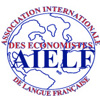Emerging greater Eurasia: new perspectives for Europe and Russia
Viacheslav SHUPER
Institut de Géographie de l’Académie des Sciences de Russie vshuper@yandex.ru
Abstract : The first globalization, Pax Britannica (mid-XIX century – 1914) was followed by the profound disintegration of the global economy in 1914-1945. The second globalization, Pax Americana (1945-2008) was also taken over by the disintegration of the world economy, which should last normally for about twenty years. The domination of the West long of 500 years is coming to the end and the third globalization is going perhaps to become Pax Sinensis. The second cycle of disintegration of the global economy historical mission is to prepare the new globalization with the Greater Eurasia as a core. Russia is expected to play the role of a kind of bridge between two huge economic masses: the East Asia and the EU. The squalor of the Russia’s pacific facade is its main geo-political and geo-economic weakness. The deep reconstruction of the Trans-Siberian railway in order to reduce the transportation cost and increase the speed will be quite possible with the massive transit from the Chinese north-east, Japan and South Korea. The construction of railways and highways conducting from Siberia to China will promote the exports of energy-intensive and water- intensive merchandises to the Asia. Constructing such ways and reconstructing the Trans-Siberian railway it’s possible to overcome “the mainland curse” of Siberia. The industrial development of Siberia and of the Russian Far East, partly
failed in the XX century cannot be repeated in XXI century. It is necessary to proceed to the post-industrial development as a process based on ventures enterprises, using the new technologies of exploitation of resources and of its transportation if necessary.
Keywords: cycles, integration, disintegration, Great Eurasia, Siberia, post- industrial development
JEL Classification : O18, R58

